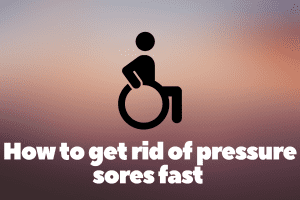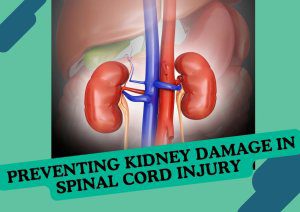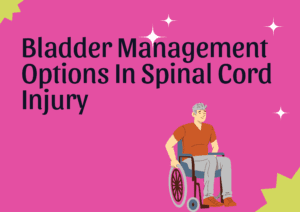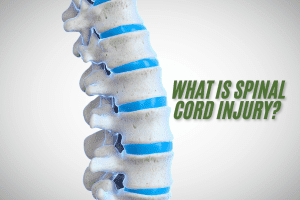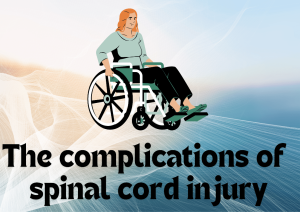
By Scihealthhub – October 7, 2024
In this article, we aim to provide you with a comprehensive step-by-step guide on preventing pressure sores in individuals with spinal cord injury.
Are you newly diagnosed with a spinal cord injury and looking to equip yourself with strategies to prevent pressure sores? Or have you experienced pressure sores in the past and are determined to stop them from recurring?
If you answered yes to either of these questions, you’re in the right place.
This article will guide you through effective steps to prevent pressure sores.
What Are Pressure Sores?
First, let’s explain what pressure sores are.
Pressure sores, also known as bedsores, occur when the skin and underlying tissues are damaged due to prolonged pressure. Individuals who are bedridden or have limited mobility are most at risk because they cannot shift their weight or change positions frequently enough to relieve prolonged pressure on certain parts of their bodies.
This prolonged pressure reduces blood flow to the skin and underlying tissues, depriving them of oxygen and nutrients, which ultimately leads to tissue damage.
Common Pressure Points Vulnerable to Sores After Spinal Cord Injury
Certain areas of the body are more susceptible to developing pressure sores after a spinal cord injury.
These areas typically lie over bony prominences, where the skin is thinner and less cushioned by muscle or fat.
The areas include:
- Tailbone (sacrum and coccyx): prolonged sitting in a wheelchair can put pressure on this area.
- Heels: When lying in bed for long periods, the heels bear pressure from the weight of the legs.
- Hips (trochanters): lying sideways for extended period puts put pressure on the bony parts of the hips.
- Shoulder blades and spine: reclining in a bed or chair can put pressure on the shoulder blades and the spine.
- Buttocks (ischial tuberosities): prolonged sitting without shifting can lead to pressure sores in this region.
- Elbows: prolonged contact with armrests or the bed while lying or sitting can lead to sores on the elbows.
- Back of the head (occipital region): In individuals who spend much time lying on their backs, the occipital region is a vulnerable pressure point.
By recognizing these high-risk areas, you can take steps to protect them.
Why Prevention of Pressure Sores is Crucial
Prevention is always better than cure, especially for individuals with spinal cord injuries or limited mobility.
Pressure sores can develop quickly, sometimes within as little as two hours of sustained pressure on the skin. Although they may start as minor irritations, they can progress rapidly to serious wounds if not addressed.
Here are several reasons why preventing pressure sores is essential.
Prevents Infections
Untreated pressure sores can lead to severe infections, such as cellulitis (skin infections), osteomyelitis (bone infections), or even sepsis—a life-threatening systemic infection. These infections may require hospitalization, antibiotics, or even surgery.
Improves Quality of Life
Pressure sores cause significant pain, discomfort, and limit daily activities. Preventing sores helps maintain comfort, mobility, and independence.
Avoids Intensive Treatments
Treating advanced pressure sores can be time-consuming and costly, often requiring specialized wound care, hospitalization, or surgical intervention. Prevention eliminates the need for these intensive treatments.
Saves Money
The financial burden of treating pressure sores—from wound dressings to antibiotics and surgeries—can be substantial. Prevention saves both personal and healthcare costs.
Reduces Emotional and Psychological Stress
Living with pressure sores can negatively impact emotional well-being, leading to frustration, helplessness, and depression.
Lowers Risk of Early Death
Individuals with pressure sores are 4.5 times more likely to die than those without sores (1). Sepsis, a life-threatening condition, is a significant cause of these deaths.
Assessing Your Risk For Pressure Sores
Knowing your risk level for developing pressure sores is crucial for effective prevention. Several factors are used to evaluate this risk, including:
Mobility Status
- Complete immobility: high risk due to prolonged pressure on certain areas.
- Partial mobility: moderate risk if some repositioning is possible.
- Independent mobility: lower risk, especially if frequent repositioning is done.
Sensory Perception
- No sensation below the injury: high risk, since they can’t detect early signs of pressure sores (e.g discomfort).
- Partial sensation: moderate risk, as some sensation may allow for repositioning before skin breakdown occurs.
- Normal sensation: lower risk if individuals can feel pressure points and adjust accordingly.
Nutritional Status
- Poor nutrition: high risk, especially if the individual is not consuming enough protein, vitamins, and minerals.
- Moderate nutrition: moderate risk, if dietary intake is adequate but could be improved.
- Good nutrition: lower risk, as good nutritional status supports healthy skin and tissue repair.
Moisture and Incontinence
- Incontinence: high risk if moisture is frequently in contact with the skin, as it weakens the skin barrier.
- Occasional moisture: moderate risk, especially if moisture management strategies are in place.
- Dry skin: lower risk if moisture buildup is not a frequent problem.
Age and Skin Condition
- Older age: high risk due to thinner skin, decreased elasticity, and slower healing.
- Previous pressure sores: high risk, as healed sores are more prone to reopening.
- Healthy skin: lower risk if the skin is intact and well-nourished.
Comorbidities
- Diabetes: high risk due to poor circulation and slower healing rates.
- Cardiovascular conditions: moderate to high risk depending on the severity, as reduced blood flow can limit oxygenation of the skin.
Body Weight
Both underweight and overweight individuals with spinal cord injury are at greater risk for pressure sores:
- Underweight: higher risk due to bony prominences pressing against surfaces, increasing pressure on the skin.
- Overweight/obesity: higher risk as excess weight can lead to increased pressure.
Level and Completeness of Injury
- High-level injuries (C1-C4): higher risk, as these individuals often have limited or no ability to move, feel, or adjust their position independently.
- Lower-level injuries: moderate risk, as individuals may retain some ability to move or feel below the injury site, although they may still be at risk due to limited mobility.
Psychological and Cognitive Factors
- Individuals with cognitive impairments or psychological issues such as depression or apathy may be at higher risk because they are either unaware of the need to change positions regularly or are less motivated to perform self-care.
Step-by-step Guide to Preventing Pressure Sores After Spinal Cord Injury
1. Change your position regularly
Regular repositioning relieves pressure on vulnerable areas, allowing blood to circulate and nourish the skin.
How to achieve this:
- If you’re sitting in a wheelchair, car or other surfaces – shift your weight every 15-30 minutes. One way of doing this is by performing a push up for 15 seconds every 15 minutes or 30 seconds every 30 minutes. Push up is done by pushing on the arms of the chair to raise the body and buttocks off the seat.
- If you are lying in bed, change position every 2 hours.
2. Use specialized support surfaces
Special mattresses and cushions can distribute weight evenly and reduce pressure points.
How to achieve this:
Pressure-relieving mattresses: you can choose from any of the pressure-relieving mattresses currently available in the market.
They include:
- Alternating pressure mattresses (e.g Drive Medical Med Aire Alternating Pressure Mattress, Invacare microAIR Alternating Pressure Mattress)
- Memory foam mattresses
- Air mattresses
- Low air loss (e.g Hill-Rom Synergy Air Elite)
- Air fluidized mattresses (e.g Clinitron Bed)
- Gel mattresses (e.g Roho Dry Flotation Mattress)
Pressure-relieving cushions for chairs and wheelchairs. These come in different types, such as air-filled, gel, or foam cushions, to suit individual needs.
Some popular brands include:
- Roho cushions – uses interconnected air cells that conform to the user’s shape and move with their body, providing customized support and pressure relief.
- Jay cushions – are made with a combination of foam and gel, offering both comfort and pressure relief. It’s suitable for those at moderate to high risk of sores.
- Vicair Cushion: uses air-filled compartments that adjust to the user’s weight and posture, providing continuous pressure relief.
3. Maintain skin hygiene
Clean, dry skin is less prone to irritation, breakdown, and infection.
How to achieve this:
- Gently wash the skin with a mild soap and lukewarm water daily.
- Avoid hot water – it can cause excessively dry skin, which is prone to cracking, irritation, and breakdown.
- Pat the skin dry with a soft towel and avoid vigorous rubbing.
- Use moisturizers
- Use dry, wrinkle-free bed sheets – wrinkles in bed sheets can create uneven surfaces, increasing the risk of friction and shear forces on the skin.
4. Manage moisture
Excess moisture, whether from sweat, urine, or feces, weakens the skin’s barrier function and increases the risk of sores.
How to achieve this;
- Change incontinence products promptly.
- Apply moisture barrier creams such as Cavilon or Calmoseptine. Vaseline Petroleum Jelly can serve, but dedicated barrier creams are more effective.
5. Eat healthy
Good nutrition supports skin health and wound healing, which helps in the prevention of pressure sores.
How to achieve this:
- Eat foods rich in protein (lean meats, eggs, beans), vitamins (especially A, C, and E), and minerals like zinc.
- Stay hydrated by drinking plenty of water.
6. Monitor your skin regularly
Early detection of skin changes can prevent minor issues from turning into serious sores.
How to achieve this:
- Check your skin at least twice daily, paying close attention to pressure points.
- Use a mirror or ask a caregiver to help check hard-to-see areas like your back, heels, and buttocks.
- Look for signs of redness, blistering, or broken skin.
7. Use proper lifting techniques
Friction and shear from improper lifting or shifting can damage the skin.
How to achieve this:
- Work with a physical therapist to learn the best transfer technique for you and your body.
- Consider the use of a lift device or slide sheets during transfers to minimize dragging.
8. Manage underlying health conditions
Certain health conditions, such as diabetes or peripheral artery disease, can increase the risk of pressure sores.
How to achieve this:
- Regularly monitor your blood pressure, blood sugar and blood cholesterol levels
- Work with your healthcare provider to manage any underlying health conditions.
9. Stay active and exercise
Regular movement improves blood flow and strengthens the muscles, which helps prevent pressure sores.
How to achieve this:
- Incorporate daily physical therapy or range-of-motion exercises.
- Wheelchair users can try seated exercises.
10. Seek medical advice at early signs
Addressing pressure sores early can prevent complications and speed up healing.
How to achieve this:
- Contact a healthcare professional if you notice unusual redness, swelling, or skin breakdown
In conclusion, by following these expert tips and strategies, people with spinal cord injuries can maintain healthy skin and prevent the occurrence of pressure sores.
If you lliked this article, please subscribe to our newsletters and follow our social media handles. Feel free to drop your comments or questions.

